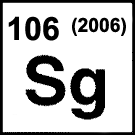Apr 14
20180
Computers, Music, Technology, Video
adventures in time and space AnneMarie Thomas Geoff Shelton OK Go OK Go Sandbox One Moment Playful Learning Lab slow motion STEAM STEM University of St. Thomas
Adventures In Time And Space 11: The One Moment and OK Go
The One Moment is a 2016 music video by OK Go. OK Go is an American rock band made up of Damian Kulash (lead vocals, guitar), Tim Nordwind (bass guitar, vocals), Dan Konopka (drums, percussion), and Andy Ross (guitar, keyboards, vocals).
The One Moment contains 4.2 seconds of real-time footage that is then shown in slow motion and played over the length of the 4-minute video. The footage records 325 events that were initiated either by the band members or by timers and were slowed down to times up to 20,000 percent from real-time speed to match the beat of the song. Such visualizations of fast events are a favorite topic of mine and have been mentioned in a previous post.
OK Go’s music videos have long been a favorite of educators for their awesome blend of creativity, science, and technology. So, not surprisingly, the band has taken the next step by collaborating with director Geoff Shelton and AnneMarie Thomas of the Playful Learning Lab at the University of St. Thomas to develop an online resource for educators.
The OK Go Sandbox provides teachers and students with a way to use the band’s music videos to play with concepts in unexpected ways and to inspire students in science, technology, engineering, art, and math (STEAM). OK Go’s music videos serve as starting points for integrated guided inquiry challenges that allow students to explore various STEAM concepts.
Director Geoff Shelton is planning to create new videos specifically designed to inspire classroom discussions and projects. Google and Morton Salt, along with anonymous donors, have generously brought to life the launch of this online resource.














